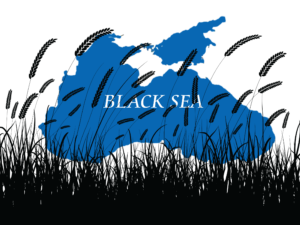If everything went as planned last evening for my colleague Tom Barnett, he was seated close to field at one of the most exciting conference championships in years as Indianapolis defeated New England. As he entered the stadium with thousands of other fans, there is a good chance he went through several layers of security checks (some obvious and some not). Aaron Pressman, writing in BusinessWeek, discussed security measures taken during a previous playoff game between the New Giants and Philadelphia Eagles (“Homeland Security 2.0,” 22 January 2007.]
“Few if any of the 68,000 rabid Philadelphia Eagles fans arriving for last Sunday’s National Football League playoff game against the New York Giants knew that they had been scanned by one of the latest high-tech anti-terrorism tools. Pennsylvania security officials deployed radiation probes at the gates of Lincoln Financial Field to stop terrorists from sneaking in a homemade nuclear device that could kill thousands. Personnel on the grounds carried even more-sensitive equipment. The new gear, made by Thermo Fisher Scientific Inc., was tailored to distinguish dangerous radioactive material from the harmless traces left by common medical procedures that have prompted screeners to question more than a few innocent fans at events such as the Super Bowl. The Waltham (Mass.) company’s more discerning scanner and similar new products from competitors are part of a wave of advanced equipment coming to market five years after the September 11 terrorist attacks. Call it homeland security 2.0.”
False alarms are a difficult problem for any sensor system. Make the sensor too sensitive and false alarms rise dramatically and, like the boy who cried wolf, eventually real alarms are missed amid the noise. Make sensors less sensitive and they may miss critical information that could save lives. Pressman gives a hint of how large a problem false alarms can be.
“After the 2001 attacks, federal, state, and local governments snapped up equipment that had been created for industrial applications such as detecting leaks at nuclear power plants. But the gear had been quickly adapted for its new use and didn’t always perform as required. Portable detectors carried by some New York City policemen signaled an alarm near any radioactive source, even the granite around entrances to subway stations. Scanners for ports tagged containers carrying kitty litter as potential hazards. U.S. Customs & Border Protection, a division of the Homeland Security Dept., told Congress in May that it recorded 318,000 alarms from port sensors scanning 80 million containers over the past three years without finding any serious threats.”
One of the programs that Enterra Solutions is working on with Oak Ridge National Lab (and one featured in an article in Esquire Magazine [“The Age of Resilience“]) is ResilienceNet whose aim is to accept inputs from Oak Ridge’s SensorNet and push alerts to those who need to respond to them. As you can imagine, false alarm rates are a concern for both Enterra and Oak Ridge. Reducing false alarm rates could be one of the topics investigated by the Institute for Advanced Technologies in Global Resilience (IATGR). Pressman writes, “Thermo Fisher is aiming to eliminate the false alarms,” but that would surprise me. If you have no false alarms, you don’t know whether the sensor is detecting all important data. Normally, sensor manufacturers are looking for the lowest possible false alarm rate. Since Thermo Fisher Scientific is one of the companies in the running to provide scanners for ports, getting the annual false alarm rate into the hundreds instead of hundreds of thousands is an important objective.
False alarms can affect a lot of areas of our lives. A New York Times article by Gina Kolata discussed a reported whooping cough epidemic in New Hampshire that turned out to be a non-event triggered by a high false alarm rate from a quick and highly sensitive molecular test for the whooping cough bacterium, Bordetella pertussis [“Faith in Quick Test Leads to Epidemic that Wasn’t,” 22 January 2007]. Not a single case of whooping was actually discovered, but the impact of the false alarms was significant.
“Nearly 1,000 health care workers at the hospital in Lebanon, N.H., were given a preliminary test and furloughed from work until their results were in; 142 people … were told they appeared to have the disease; and thousands were given antibiotics and a vaccine for protection. Hospital beds were taken out of commission, including some in intensive care. Now, as they look back on the episode, epidemiologists and infectious disease specialists say the problem was that they placed too much faith in a quick and highly sensitive molecular test that led them astray.”
In an era where terrorism is on everyone’s mind and leaders fear a chemical, biological, or nuclear attacks that affect large segments of the population, having a reliable sensor network is important. A network that triggers an inordinate number of false alarms, however, is not much better than no network at all. Quick, reliable tests are important for helping contain situations before they become crises.
“Infectious disease experts say such tests are coming into increasing use and may be the only way to get a quick answer in diagnosing diseases like whooping cough, Legionnaire’s, bird flu, tuberculosis and SARS, and deciding whether an epidemic is under way.”
As you can see, there are innumerable individuals applying themselves to all aspects of human security. Although they are working in different areas, they face similar problems — false alarms being just one. The search for Global Resilience requires sensors, tests, networks, data mining, alerts and so forth. The wealth of data can be overwhelming and automated processes for dealing with it are a must. Data must be collected and correlated across disciplines as well as across borders. It’s an exciting challenge that will keep us all very busy for years to come.




